In the vast tapestry of Greek mythology, Persephone stands out as a figure of intrigue and duality. Daughter of Demeter and ruler of the Olympians, Zeus, she’s both the innocent maiden of spring and the formidable Queen of the Underworld. Let’s delve into her multifaceted story.
Persephone Key Facts
Family tree
| Parents | Demeter and Zeus |
| Partner(s) | Hades |
| Siblings | Only child of Zeus and Demeter. Many half-siblings. |
| Offspring | Zagreus, Melinoe |
Names & Others
| Roman Name | Proserpina |
| Other Names | Kore (maiden) |
| The God of | Spring and the Underworld |
| Symbols | Pomegranate, torch, flowers |
Name and Etymology
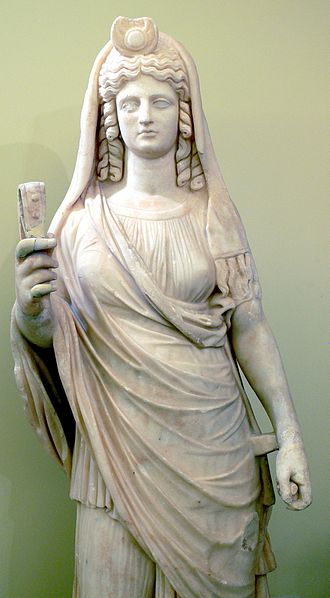
Persephone, often referred to as Kore (meaning “maiden”), is a name that resonates with mystery. The etymology of “Persephone” is debated; some believe it means “she who destroys the light,” linking her to her role in the Underworld. Her Roman counterpart, Proserpina, carries a similar aura of enigma. Throughout various texts and tales, she’s been given epithets that reflect her dual nature, such as “Mistress of the Underworld” and “Bringer of Seasons.”
In Ancient Greece, names carried weight and meaning. For Persephone, her name and its variations encapsulated her journey from innocence to power. While “Kore” emphasized her youthful naivety, “Persephone” however, hinted at the depths of her character. Shaped as they were by her experiences in both the world above and below.
Persephone’s Family and Childhood
Born to Demeter, the goddess of harvest, and Zeus, the king of gods, Persephone’s lineage was nothing short of divine. Her birth brought joy to the Olympian family, and her early years were marked by the love and protection of her doting mother. The lush meadows of Mount Olympus were her playground, where she frolicked with Nymphs, Guardians of Nature and other young deities.
However, not all was idyllic in Persephone’s childhood. The seeds of her future were sown one fateful day when, drawn to a beautiful narcissus flower, she was abducted by Hades, the god of the Underworld. This event, unbeknownst to the young goddess, was set in motion by her own father, Zeus, who had promised her to Hades in marriage.
This abduction, while traumatic, marked the beginning of Persephone’s transformation. From a carefree maiden, she would later evolve into a queen with dominion over life and death.
Persephone’s Relationship with Hades
The relationship between Persephone and Hades is one of the most iconic in Greek mythology. Initially, their union began with deception and force; Hades, smitten by Persephone’s beauty, kidnapped her to be his queen. However, as time passed in the shadowy realms of the Underworld, a bond formed between them.
Persephone, initially resistant to Hades’ advances, began to see the god in a new light. Beyond his stern exterior lay a deity who was deeply committed to his realm and its inhabitants. Their relationship evolved into one of mutual respect and love, with Persephone ruling alongside Hades as an equal.
Persephone’s Children
Persephone’s lineage, much like her own tale, is a blend of the ethereal and the enigmatic. Her offspring, born from unions both divine and complex, carry forward her legacy, each embodying unique facets of the goddess’s persona.
Zagreus
Zagreus, Minor Deity and Son of Zeus stands as one of the most intriguing figures in Greek mythology. Often identified with Dionysus, he is believed to be the offspring of Persephone and Zeus (her father) in some tales. While the sources are not all agreed, it seems Zeus was in the guise of Hades, when Zagreus was conceived.
His narrative is one of tragedy and rebirth. Born with immense potential and destined for greatness, Zagreus was pursued by the Titans at the behest of a jealous Hera. They tore him apart, but his heart was saved and reborn as Dionysus. This cycle of death and rebirth mirrors Persephone’s own journey, making Zagreus a poignant figure in her story. His tale also underscores the recurring theme of duality and transformation prevalent in myths associated with the Queen of the Underworld.
Melinoe
Melinoe, the spectral goddess of ghosts, is a testament to Persephone’s union with Hades. She embodies the duality inherent in her mother’s nature. Often depicted with a visage that’s half dark and half light, Melinoe bridges the realms of the living and the dead. Her very existence is a reminder of Persephone’s dual roles: the radiant maiden of spring and the somber queen reigning over the departed.
Melinoe’s nightly wanderings, where she led ghosts from the Underworld, were both a blessing and a curse. She brought solace to the souls, guiding them in their afterlife, but also instilled fear among the living, serving as a constant reminder of the world beyond.
Both Zagreus and Melinoe, in their unique ways, encapsulate the essence of Persephone. Through them, her influence extends, intertwining life, death, love, and transformation in an eternal dance.
Depiction And Characteristics
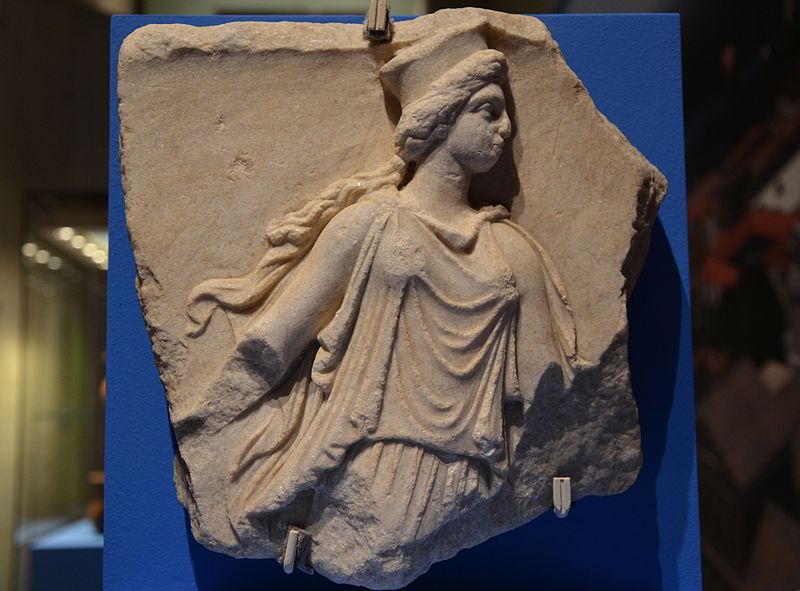
Persephone’s appearance is a blend of her roles as both a maiden of spring and the Queen of the Underworld. Often depicted with a crown, signifying her royal status, she’s also seen holding a pomegranate, a symbol of her binding to Hades. Flowers, especially the Narcissus, The Handsome Boy In Love With Himself, are frequently associated with her, representing the beauty and fragility of life.
In art, her visage is one of grace and serenity, but her eyes often carry a hint of melancholy, a nod to her dual existence. Whether she’s portrayed amidst the blossoms of spring or the shadows of the Underworld, Persephone’s essence is captured with reverence.
Persephone’s Personality
Persephone’s personality is a tapestry of contrasts. As Kore, she embodies innocence, joy, and the vibrancy of spring. Yet, her time in the Underworld has endowed her with wisdom, resilience, and a profound understanding of the cycles of life and death. She’s compassionate, often interceding on behalf of mortals, but also commands respect as the Queen of the Dead.
Her experiences have shaped her into a deity who understands the nuances of existence. She’s neither just the joyous maiden nor solely the somber queen; she’s a harmonious blend of both.
Persephone’s Powers
As a goddess, Persephone wields significant power. In the realm of the living, she governs the cycle of life, ensuring the balance between growth and decay. Her descent to the Underworld marks the onset of winter, while her return heralds the rejuvenation of spring.
In the Underworld, her influence is unparalleled. Alongside Hades, she rules over the souls of the departed, guiding them through the afterlife. Her compassion often shines through, as she’s known to grant favors to those who seek her out with genuine hearts.
Persephone’s Symbols, Animals, and Plants
The pomegranate is the most iconic symbol associated with Persephone. Representing both fertility and her bond to the Underworld, it’s a fruit that encapsulates her story. Moreover, the act of eating its seeds bound her to Hades, ensuring her cyclical return to him.
Flowers, especially the narcissus, are emblematic of her maiden aspect. They signify the fleeting nature of life and the beauty that can be found in every moment. In terms of animals, bats and owls, creatures of the night, are often linked to her, symbolizing her dominion over the shadowy realms.
Persephone’s Roles And Responsibilities
Persephone’s roles are as varied as the seasons she governs. In the world above, she’s the harbinger of spring, breathing life into dormant seeds and ensuring the earth’s fertility. Her presence is felt in every bud that blossoms and every grain that sprouts.
Yet, her responsibilities extend beyond the realm of the living. In the Underworld, she stands as a beacon for departed souls, guiding them through the labyrinth of the afterlife. Alongside Hades, she ensures that the dead find their rightful place, whether it’s in the Elysian Fields or the depths of Tartarus.
Her duality is her strength. She bridges the gap between life and death, understanding the intricacies of both. Through her, the ancient Greeks found solace in the knowledge that death wasn’t the end, but merely a transition to another form of existence.
Myths about Persephone
Persephone’s narrative is deeply woven into the fabric of Greek mythology, with her tales offering a blend of emotion, drama, and profound lessons. Two myths, in particular, stand out, capturing the essence of her character and her journey from innocence to wisdom.
The Abduction by Hades
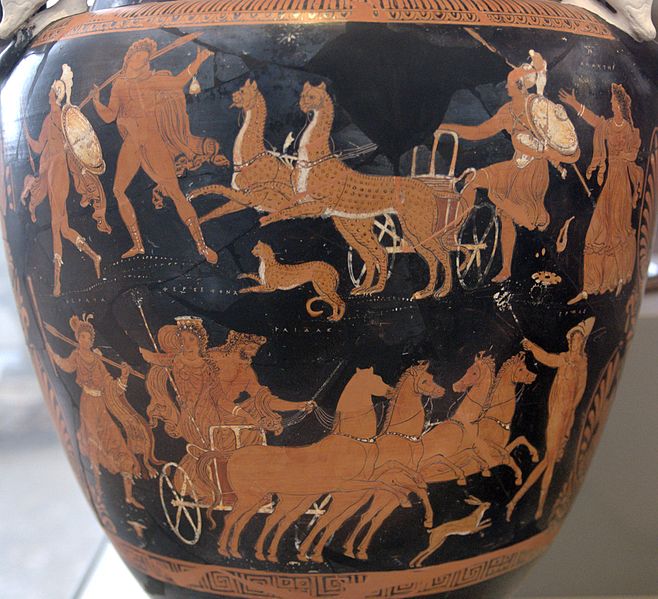
The most iconic tale is undoubtedly her abduction by Hades. As the story goes, Persephone was entranced by the beauty of a narcissus flower, a trap set by Hades. As she reached out to pluck it, the earth split open, and Hades emerged, whisking her away to his shadowy realm. This event plunged the world into darkness and despair, as Demeter, heartbroken by her daughter’s disappearance, withheld her blessings from the earth.
The “Hymn to Demeter” by Homer captures the depth of her sorrow: “She shrouded herself in a mist of brightness, and went speeding over the land, swift as a bird, seeking her child.” It was only after an agreement was reached, with Persephone spending part of the year in the Underworld and the rest above, that balance was restored, symbolizing the cycle of seasons.
Adonis the Beautiful
Adonis, a mortal of unparalleled beauty, became the center of a celestial dispute between Persephone and Aphrodite, the goddess of love. Sadly, they were both deeply enamored by him. The intricacies of their affections are beautifully captured in Ovid’s “Metamorphoses,” where he writes: “Both goddesses deserved him; both were his. They decided to share him: he would stay with Persephone for one part of the year, and the other with Aphrodite.”
This divine arrangement mirrored the cyclical nature of life and seasons, much like Persephone’s own tale. However, the story takes a tragic turn when Adonis meets an untimely end. Despite its melancholic conclusion, this myth underscores Persephone’s profound capacity for love. Furthermore it highlights her pivotal role in the complex web of relationships that define Greek mythology.
These myths, rich in symbolism and emotion, offer a window into the ancient Greek Psyche, The Deification Of The Human Soul, revealing their understanding of life, death, love, and the inexorable passage of time.
Persephone In Ancient Greek Religion
Persephone was revered across ancient Greece, and several sites were dedicated to her. The Eleusinian Mysteries, held in Eleusis, were the most famous religious rites associated with her and her mother, Demeter. Participants would undergo secret rituals, the details of which remain a mystery to this day.
Other significant sites include the Sanctuary of Persephone in Locri and various temples in Sicily, a place closely tied to the myth of her abduction. These sites were not just places of worship but also centers of pilgrimage for those seeking to understand the mysteries of life and death.
Worship and Festivals
Persephone, with her dual roles in both the world above and the Underworld, was deeply revered in ancient Greek society. Her worship was often intertwined with that of her mother, Demeter,. Together they were central figures in several festivals that celebrated life, death, and rebirth. These ceremonies were not just religious observances but also reflected the agricultural cycles, making them vital to the ancient Greek way of life.
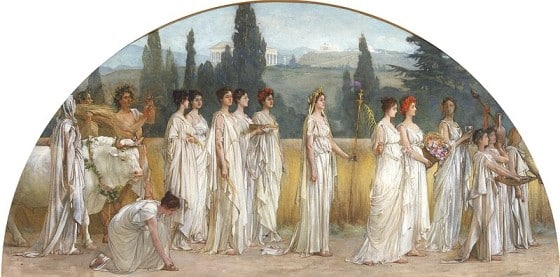
The Thesmophoria was perhaps the most significant festival dedicated to Persephone and Demeter. Celebrated primarily by women, this multi-day event was a testament to the goddesses’ roles in fertility and the agricultural cycle. The festival had various rituals that mirrored the story of Persephone’s descent and return from the Underworld. Women would descend into underground chambers, mimicking Persephone’s abduction. Then later they would emerge, symbolizing her return and the renewal of the earth. The rites of Thesmophoria were deeply secretive, known only to the participants, making it a mystery that modern scholars are still trying to unravel.
Another notable celebration was the Stenia, a precursor to the Thesmophoria. During this festival, women would gather and engage in a ritual exchange of insults. This unique practice was believed to invoke the goddesses’ blessings and ensure fertility for the land and its people. Through these festivals, the ancient Greeks both paid homage to Persephone and Demeter as well as celebrating natuures cycles. Moreover, they were acknowledging the delicate balance between growth, decay, and rebirth.
Representations Of Persephone In Art
Persephone’s multifaceted nature, transitioning from the innocent maiden to the formidable Queen of the Underworld, has always been a captivating subject in the realm of art. Ancient Greek pottery often showcased scenes from her life, especially her abduction. These pieces, with their intricate designs, not only served as decorative items but also as mediums to narrate her tales to generations. The delicate balance of her dual roles, the joyous maiden of spring and the somber queen, was beautifully captured, reflecting the ancient Greeks’ deep understanding of her character.
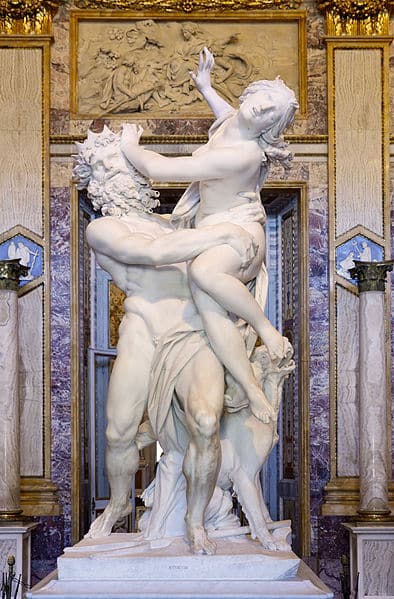
In the Renaissance and Baroque periods, her story experienced a resurgence in popularity. Artists were drawn to the drama and emotion of her myths. Gian Lorenzo Bernini’s sculpture, “The Rape of Persephone,” stands out as a masterpiece from this era. Carved with exquisite detail, it captures the very moment of her abduction, with Hades’ fingers pressing into her flesh, showcasing the raw emotion and power of the scene.
Mentions in Ancient Texts
Persephone’s presence in ancient literature is profound, with her tales woven intricately into the fabric of Greek mythology. The “Hymn to Demeter” by Homer stands as a testament to her significance. This narrative delves deep into the emotional turmoil of her mother, Demeter, as she searches for her abducted daughter. The hymn not only chronicles the events but also provides insights into the societal norms and values of the time. Indeed emphasizing the bond between a mother and her child.
Another notable mention is in the works of the poet Ovid. In his “Metamorphoses,” Persephone’s story is retold with a unique flair, blending elements of romance and tragedy. Ovid’s rendition, while staying true to the core of the myth, adds layers of emotion, painting both Persephone and Hades in shades of gray, making readers reevaluate their perceptions of the characters.
Apart from these, numerous other texts, including commentaries, plays, and philosophical writings, reference Persephone. These mentions, whether they are central narratives or passing references, highlight her pervasive influence in ancient Greek culture. Her story, with its themes of love, loss, and transformation, resonated deeply with the ancients. Furthermore making her an enduring figure in literature.
Frequently Asked Questions
The pomegranate is symbolic of Persephone’s bond to the Underworld.
She is the daughter of Demeter and Zeus.
No, she divides her time between the Underworld and the world above, marking the seasons.
She is known as Proserpina in Roman mythology.
Yes, notable offspring include Zagreus and Melinoe.
Persephone represents the cycle of life and death, bridging the gap between the mortal world and the afterlife.
Featured Image Credit: Le Musée absolu, Phaidon, 10-2012, Public domain, via Wikimedia Commons
